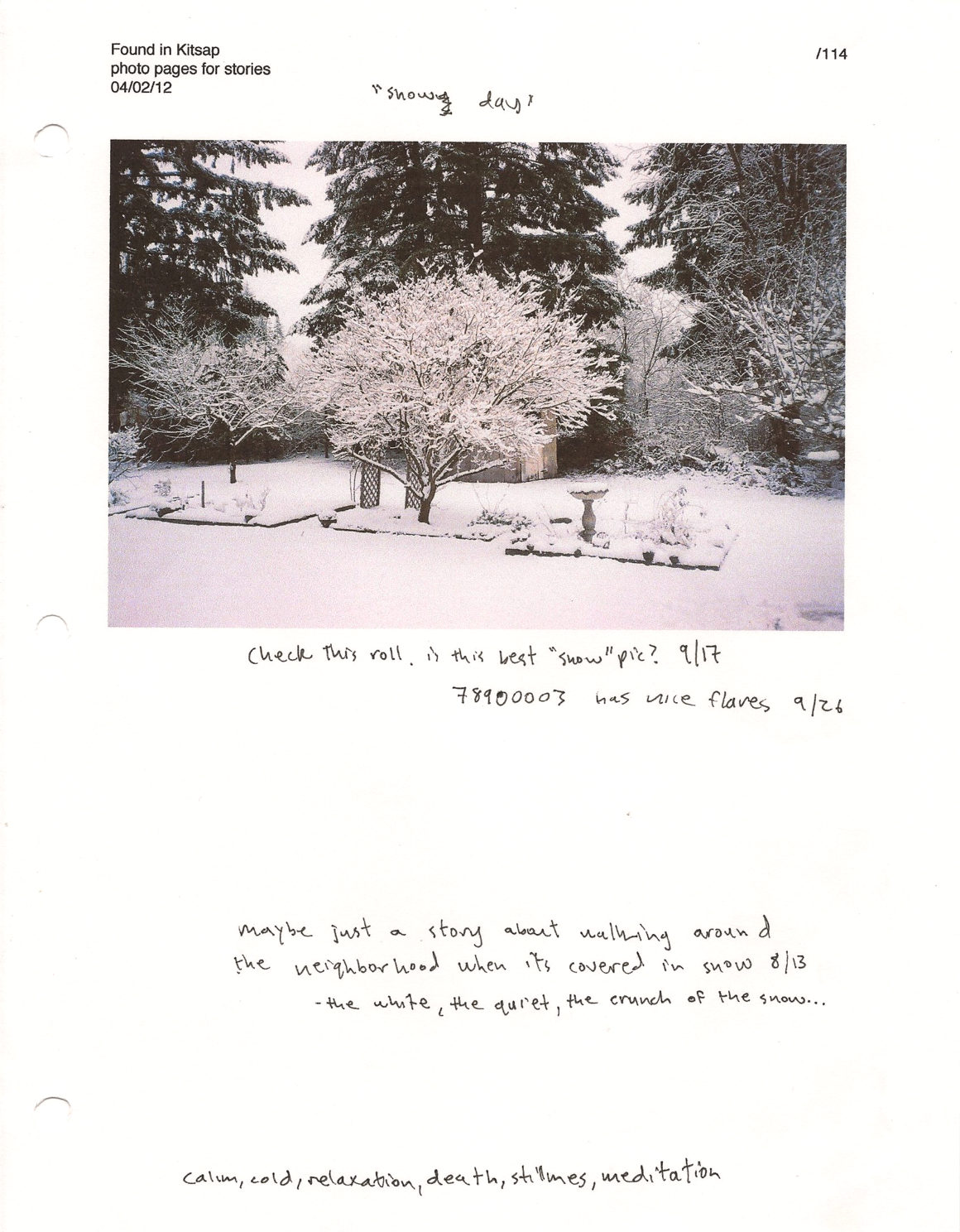Binders of Photos
Part 7
after some brainstorming I had selected photos and the limited search location of Kitsap County. but that didn’t answer the question of what was I going to do with those photos? would it be an art show? a website? a photo installation? a film? a book?
here’s what I knew; the photos were simple, everyday snapshots but through the process of being lost & found had come to represent a bigger idea. I didn’t know exactly what that was, but I felt strongly there was a bigger idea at play. whatever format the project took, it needed to draw that idea out.
my next step was to get really familiar with the photos. in order to put the puzzle together I needed to know the pieces. so I opened a word processing document and pasted the .jpg of each select photos into its own separate page. then I printed them all out on 8.5 x 11 paper. it took an entire ink cartridge to do this. (and it wouldn’t be the only time…) next, I three-hole punched the pages and loaded them into a binder.
for the following six months this binder would be my constant companion. I took it with me on trips home to Washington, to my friends’ wedding in Hawaii, on snowboarding trips to Mammoth, and to Comic Con in San Diego. all the while I was looking through the photos and making notes in the empty spaces. I thought about what emotion a photo made me feel. I imagined what was happening right before the shutter was clicked. I tried to put myself into the world of that moment.
often I’d spend an hour just looking through the images with no writing agenda. I’d put on some jazz, pour a glass of wine, and get lost in other people’s memories. I wanted to know the photos like they were people. usually my projects are very goal-orientated – so being on a journey without a destination was rather magical.
as I began to know the photos I started to rearrange them. in addition to being able to write notes this was another benefit of having a hardcopy. it was so simple to pop the binder open and change the order. often my initial pass would have included too very similar photos, but now my favorites began to emerge. the “losers” would get moved to an auxiliary section at the back. they were out of the running for now, but still available if I needed them later.
during this process I continued to mull-over what form the project would take. overall I found the photos interesting, but I wasn’t sure they were “high art” enough to live on their own. for a purely photographic project there’s a certain level of aesthetic beauty that is needed. these were not professional photos, they were people’s snapshots and I didn’t think that one their own they reached that level. but they had something else, the intrinsic fact that they a found photo.
they were a glimpse into a strangers life that had been lost since they pressed “click.” that innocent voyeurism and sense of mystery made the photos important. I wanted to present the images in a way that would raise them above mere “snapshot.” it seemed like the best way to do this was with a “coffee table” style art book. but in order to capture that aspect of a found moment there needed to be writing to accompany the images.
again, another problem I didn’t have a solution for. what on Earth was I going to write? find out in the next part, “100 Pieces from 100 Puzzles.”
-Luke

